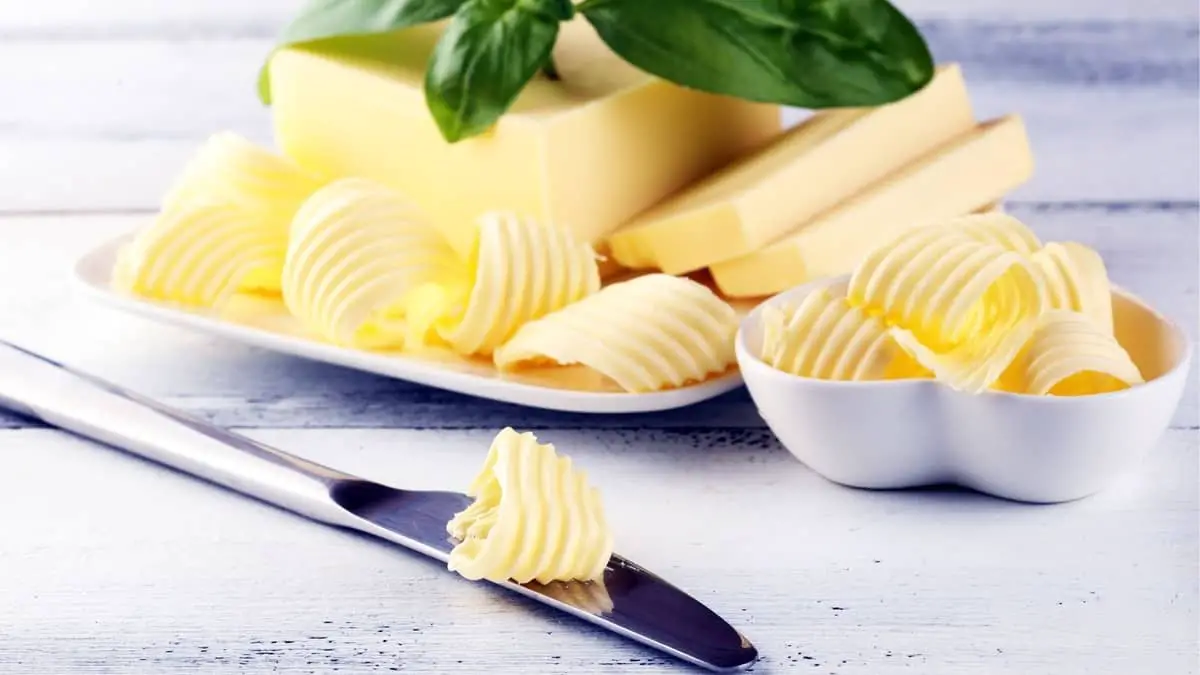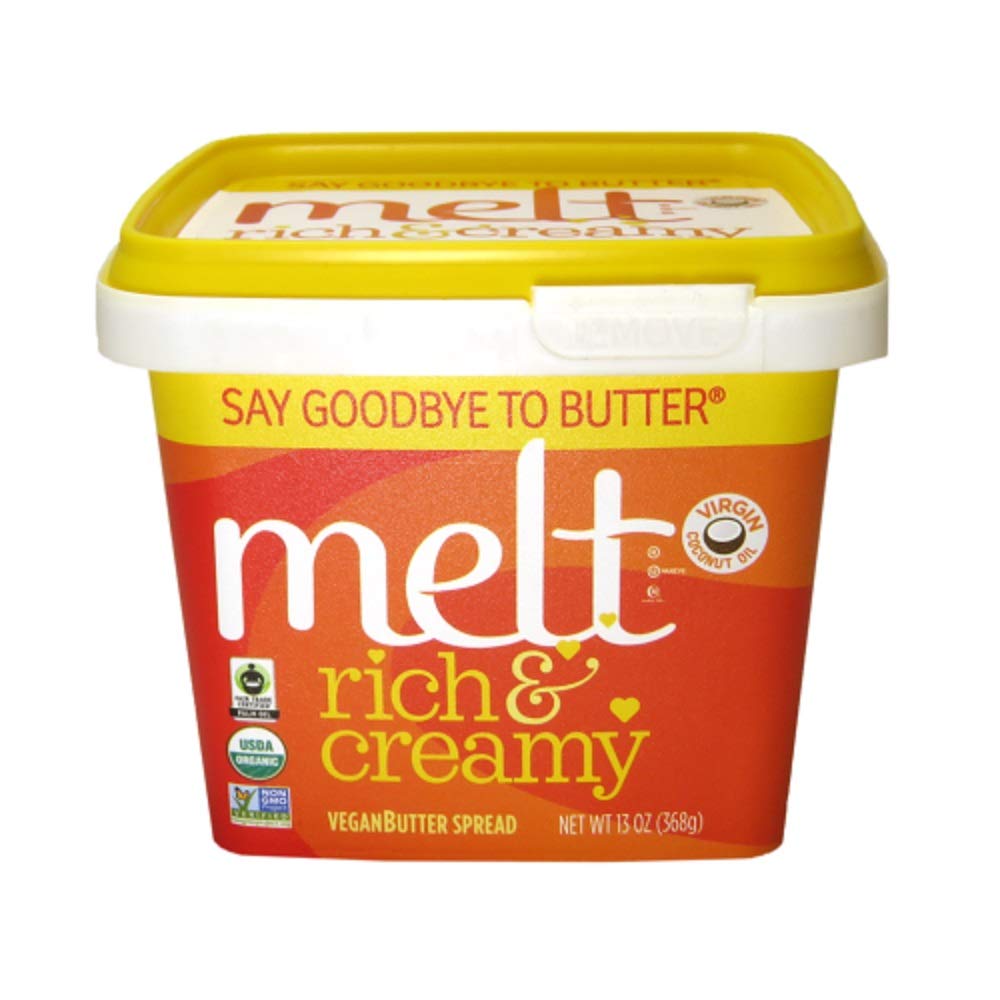Last Updated on January 28, 2022
If you come across some older recipes, you might find an ingredient called Oleo. That you may not be familiar with it, it was once a popular ingredient. So, you may wonder, what is Oleo?
Though Oleo may seem like an odd-sounding thing to you, your grandmother probably baked with it on a regular basis. It was once a common ingredient listed on recipes for things such as cake, cookies, brownies, and much more. Despite its unusual name, many people know it but something else today.
What Is Oleo In Baking?
Oleo, also known as oleomargarine, is another name for margarine. It is a butter substitute that consists of vegetable oil, water, and salt. It also contains other ingredients and flavoring to give it a taste and appearance like real butter.
Oleomargarine is a combination of the Latin word oleum, which means oil, and along with the Greek word margarite, which translates to pearl. The FDA requires that all brands of margarine must contain 80 percent fat and only use safe ingredients. To make it similar to butter, it is highly processed.
Most of the time margarine uses a combination of vegetable oils including soybean, corn, palm, canola, or olive oils. It also has artificial and natural ingredients as well and sometimes yellow food coloring as well to give it a more butter-like appearance. The oil used must undergo a chemical transformation known as hydrogenation in order for it to become a solid.
In many cases, margarine can be used in place of butter in recipes. Unlike butter, which uses cream, Oleo uses plant-based oils, making it vegan-friendly in most cases. It can be a great option for those looking to avoid dairy due to intolerances or are simply looking for a vegan option.

Brief history
The origin of Oleo goes all the way back to 1813 when a French chemist by the name of Michel Eugène Chevreul discovered margaric acid. This led scientists to believe that three fatty acids, margaric acid, oleic acid, and stearic acid, combined to make up most animal fats.
Then, in 1869 contest Emperor Napoleon III held a contest to find an alternative to butter since it was both expensive and hard to come by. The winner of the contest had the honors of taking home a grand prize.
Hippolyte Mège-Mouriès won the contest and went on to patent his creation as oleomargarine. Oleomargarine soon became popular in France and all across Europe as well. Shortly after it made its way over to America, however, it wasn’t totally well-received at first.
America and oleo
As the American economy was undergoing a shift from agriculture to industrial Dairy farmers felt threatened by this new product. Worried that it would take away their jobs, dairy farmers wrote an appeal to Congress.
This resulted in the Oleomargarine Act of 1886 which allowed chemists to check samples of butter for any oleomargarine. If it contained Oleo, a tax of two cents per pound of Oleo was imposed. The act lasted until the 1950s until it became terminated.
Melt Usda Organic Rich & Creamy Butter Made From Plants
Wisconsin took the push against Oleo even further, banning the sale of yellow margarine in 1896. Since yellow margarine wasn’t allowed, people begin selling pink margarine in Wisconsin instead. It wasn’t until 1967 that Wisconson lifted the ban against the sale of yellow margarine.
Then, in the 1970s butter gained attention as high saturated fat levels became associated with heart disease. This led many people to make the switch to margarine instead of butter. However, more recent studies show that margarine is not the heart-healthy ingredient researchers once said.
Are Oleo And Butter The Same Thing?
Though in many cases butter and Oleo can be used interchangeably in recipes, they are not the same thing. Butter is simply churned butter or cream, it does not contain artificial ingredients. Oleo, on the other hand, uses vegetable oil, water, salt, and other natural and artificial ingredients.
Margarine is generally cheaper than butter. Some types of margarine may contain trans fats, which scientists consider to be unhealthy. Like butter, it comes in both sticks and spreadable forms.
What Can I Substitute For Oleo?
Butter is the best substitute if a recipe calls for Oleo as it will give the texture and flavor the recipe needs. In some cases, vegetable shortening will also make a suitable substitute as well.
For recipes such as cakes, muffins, cookies, brownies, and quick bread you can use healthier alternatives. This includes applesauce, nut butter, Greek yogurt, coconut oil, or mashed bananas.
Can I substitute Crisco for oleo?
Since Crisco is a type of vegetable shortening, you can use it as a substitute for Oleo in some cases. It will generally work in cookies, cakes, quick bread, muffins, pie crusts, and certain doughs. However, it will not work as a substitute in recipes where butter is melted and sugar dissolved, such as no-bake cookies, candies, and fudge.
A Butter Substitute
Oleo is the same thing as margarine, which is a butter substitute. However, people these days generally just call it margarine. It contains vegetable oils, generally soybean, corn, palm, canola or olive oils, water, and salt, along with other natural and artificial ingredients as well.
Oleo has been around since the late 1800s and is a common baking ingredient all across the world. Though not as healthy as once many believed, it can be a great dairy-free alternative. In most cases, it contains no animal products, so it is safe for vegans to use.
Like butter, you can use margarine for many recipes including cake, cookies, brownies, muffins, quick bread, pastries, and more. It has a very similar taste and texture to butter and most people can’t even tell the difference between the two.
Though it wasn’t widely accepted in America at first, especially in Wisconsin, it has now become a common ingredient. However, there are many people who still prefer to use butter.
Do you have any questions regarding what is Oleo? If so, please ask any questions on the ingredients of Oleo and how to use it in the comment section below.

Ever since she was a young girl, Anna has been a lover of desserts. As an adult, she enjoys
baking a variety of desserts from cakes, cookies, brownies, bread, and more from scratch. She
enjoys sharing her passion for baking with others who also have a sweet tooth. From properly
measuring ingredients to making sure they are the correct temperature, Anna knows the
importance small details can make in baking. She wants to share her experience with others in
hopes they can make the most delicious baked goods. When she’s not busy blogging, Anna
enjoys trying new recipes in the kitchen.


